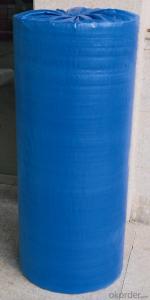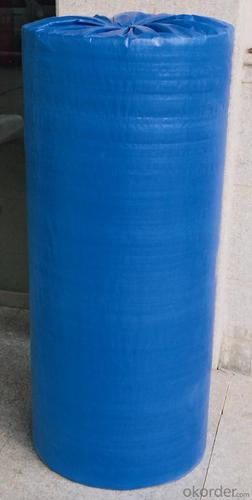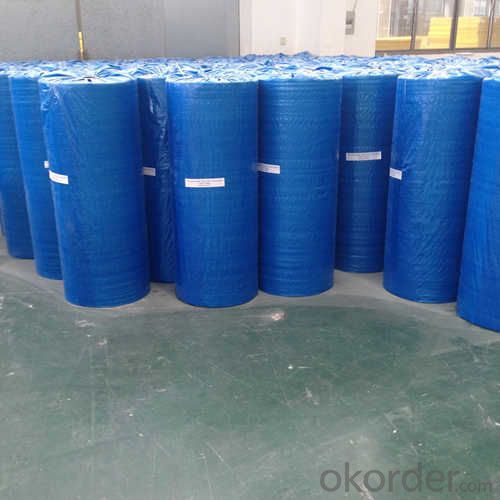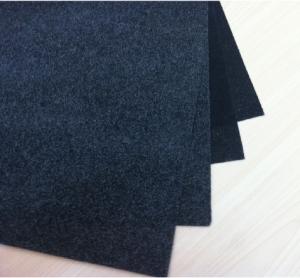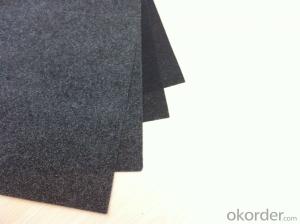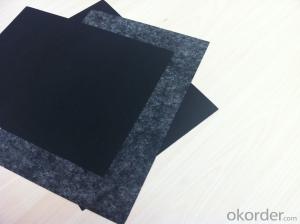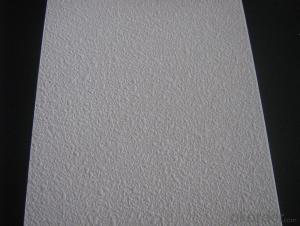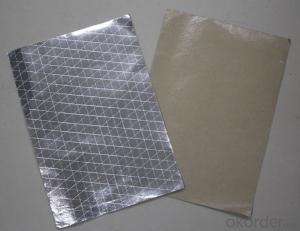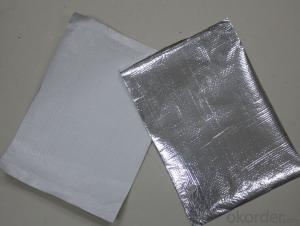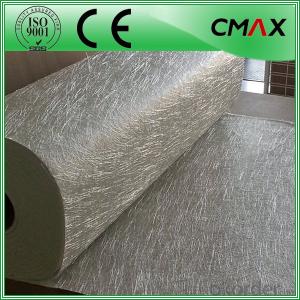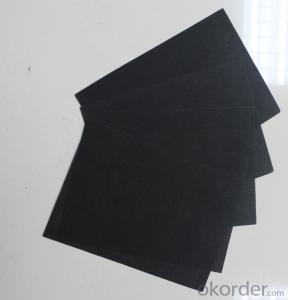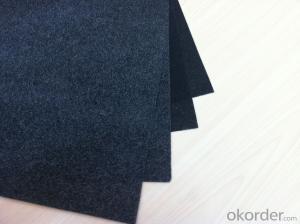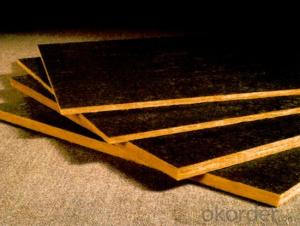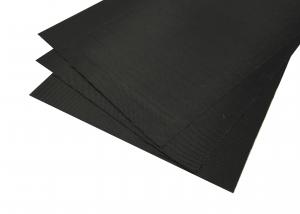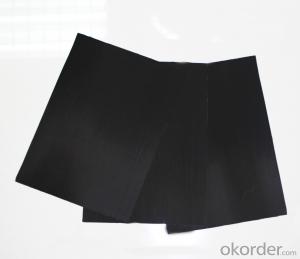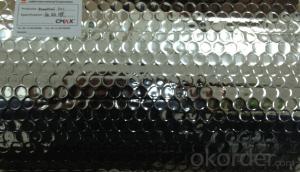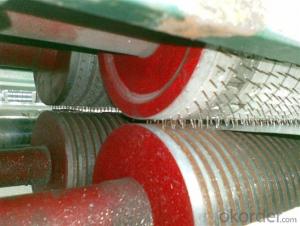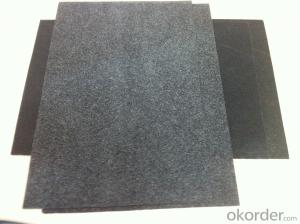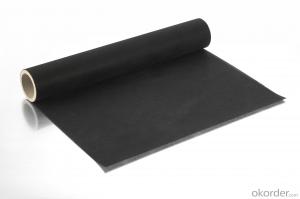Fiberglass Facing Black Fiberglass Tissue for Thermal Insulation and Acoustic-85E
- Loading Port:
- Shanghai
- Payment Terms:
- TT OR LC
- Min Order Qty:
- 500 m²
- Supply Capability:
- 100000 m²/month
OKorder Service Pledge
OKorder Financial Service
You Might Also Like
Specification
Introduction of Fiberglass Tissue
Fiberglass Tissue is a kind of facing, which is made of by the white fiberglass tissue, and special production process.
Application of Fiberglass Tissue
Our black tissue are mainly used as facing for glass wool insulation, rockwool, mineral wool etc. Also fiberglass tissue facing is used under roof decking, under attic rafters, over existing attic thermal insulation, in floors, walls and crawl spaces, and in industrial and commercial buildings to block radiant heat coming into house through the roof during the summer and retain indoor heat generated during in winter
Advantage of Fiberglass Tissue
Light weight
• High manufacturing accuracy
• High strength
• Small inertia resistance
• Strong heat dissipation ability
• Good visual effect
• High reflective insulation
• Heat resistant, water proof, stable at high temperature;
• Environmentally friendly, no smell and not-toxic;
• Smooth and clear surface;
Packing of Fiberglass Tissue
1. Waterproof paper then PVC shrinking Film
2. Water-Proof film only
3. Woven cloth
4. Kraft paper or Water Proof Film then Metal/wooden pallet
5. (Also as your request. )
Specification of Fiberglass Tissue
Specification | ||
ITEM | UNIT | VALUE |
Type | E | |
Weight | g/m2 | ≥85±5 |
Thickness | mm | 0.40 |
Tensile Strength MD | n/125px | ≥120 |
Tensile Strength XD | n/125px | ≥100 |
Fiber Diameter | µ | 9 |
Fire Resistant Property | B1 | |
Pictures of Fiberglass Tissue
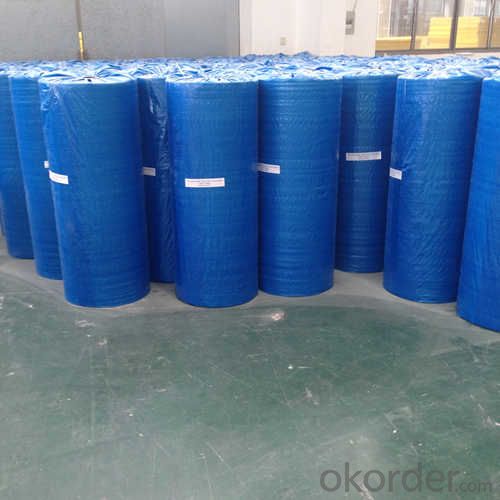
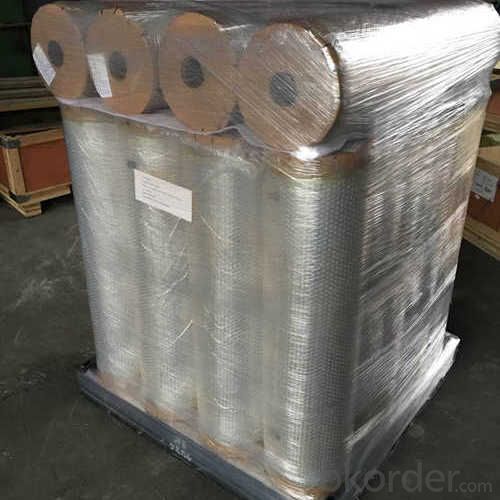
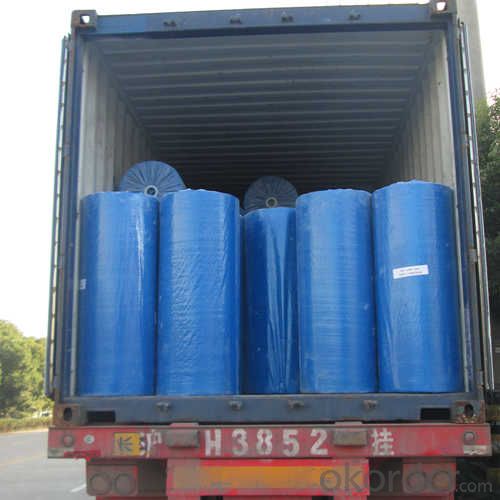
We have organized several common questions for our clients,may help you sincerely: 1. What is the storage condition? The Aluminum Foil Facing should be stored at room temperature and kept from wet and heat source. 2. How to guarantee the quality of the products? We have established the international advanced quality management system,every link from raw material to final product we have strict quality test;We resolutely put an end to unqualified products flowing into the market. At the same time, we will provide necessary follow-up service assurance. 3. How long can we receive the product after purchase? In the purchase of product within four working days, we will arrange the factory delivery as soon as possible. The specific time of receiving is related to the state and position of customers. Commonly 7 to 10 working days can be served.FAQ
- Q: Is it possible to recycle and reuse black fiberglass tissue to create new products?
- <p>Yes, black fiberglass tissue can be recycled and reprocessed into new products. The recycling process involves shredding the material, which can then be used as a filler or reinforcement in various composite materials. However, the recycling of black fiberglass is not as common as that of other colors due to the dye used, which can complicate the recycling process. Despite this, advancements in recycling technology are making it increasingly feasible to recycle black fiberglass and incorporate it into new products, contributing to a more sustainable use of materials.</p>
- Q: Is it possible to utilize black fiberglass tissue in the manufacturing of medical equipment?
- <p>Black fiberglass tissue is not typically used for medical equipment due to concerns about material safety, biocompatibility, and the potential for color-related issues in a medical context. Medical equipment often requires materials that are transparent or easily visible to ensure cleanliness and proper functioning. Additionally, materials used in medical applications must be non-toxic, resistant to corrosion, and able to withstand sterilization processes. While fiberglass can be used in some industrial applications, its use in medical equipment is limited and would require specific qualifications and approvals, focusing on white or clear forms that are more common in this industry.</p>
- Q: The user is asking if they can repurpose lint from their dryer to create homemade black fiberglass tissues.
- <p>No, you cannot use dryer lint to make black fiberglass tissues. Dryer lint is composed of fibers from clothing and other materials, which are not the same as the glass fibers used in fiberglass production. Fiberglass is made from fine filaments of glass that are combined with a resin to form a composite material. It requires specific manufacturing processes and materials that are not present in dryer lint. Using dryer lint for this purpose would not yield the desired strength, durability, or properties of fiberglass tissues.</p>
- Q: What are the most effective steps to adhere a black fiberglass tape to a wall or ceiling?
- <p>The best way to install a piece of black fiberglass tape on a wall or ceiling involves preparing the surface, applying the tape, and securing it properly. First, clean the area thoroughly to remove dust and debris. Then, cut the fiberglass tape to the desired length. Apply a high-quality adhesive specifically designed for fiberglass to the back of the tape. Press the tape firmly onto the surface, starting from one end and smoothing it out to remove any air bubbles. Use a putty knife or your fingers to press firmly and evenly. Let the adhesive dry according to the manufacturer's instructions before handling or applying any weight to the tape.</p>
- Q: Is it possible to utilize black fiberglass tissue as an insulating material within the structure of greenhouses?
- <p>Yes, black fiberglass tissue can be used for insulation in greenhouses. It is known for its thermal insulation properties, which can help retain heat inside the greenhouse, reducing the need for additional heating and maintaining a stable temperature. Additionally, black fiberglass is resistant to moisture and pests, making it a durable choice for greenhouse insulation. However, it's important to ensure proper installation and ventilation to prevent any potential issues related to condensation or air quality.</p>
- Q: Is it safe to place black fiberglass tissues in a dishwasher without causing damage or releasing harmful substances?
- <p>It is generally not recommended to use black fiberglass tissues in a dishwasher. Fiberglass is a type of plastic that can be damaged by the high heat and water pressure in a dishwasher. Additionally, the black color may be due to dye, which could potentially leach out and stain other dishes. To maintain the integrity of your fiberglass items and the cleanliness of your dishwasher, it's best to wash them by hand using warm, soapy water.</p>
- Q: This question asks about the uses of black fiberglass tissue across different sectors.
- <p>Black fiberglass tissue, also known as black glass fabric, is widely used in various industries due to its high strength, heat resistance, and electrical insulation properties. In the construction industry, it is used for reinforcing materials in composites and as a base for flooring. In the automotive sector, it is utilized for brake linings and heat shields. The electronics industry employs it for printed circuit boards and insulation. It is also used in aerospace for heat-resistant components and in the marine industry for hull reinforcement. Additionally, it finds applications in the production of sports equipment, such as surfboards and kayaks, and in the creation of high-temperature resistant fabrics for industrial settings.</p>
- Q: What distinguishes black fiberglass tissue from other types of tissues in terms of color, material, and usage?
- <p>Black fiberglass tissue is a type of non-woven fabric made from black fiberglass fibers, known for its high tensile strength, heat resistance, and chemical stability. It differs from other tissues primarily in color, as most tissues are white or natural-colored. Additionally, black fiberglass tissue has unique properties such as resistance to UV light, making it suitable for outdoor applications. It's often used in construction, automotive, and electrical insulation, whereas other tissues might be used for cleaning, medical purposes, or as a base for hygiene products.</p>
- Q: This question asks for a comparison between black fiberglass tissue and other building materials, focusing on their properties and uses in construction.
- <p>Black fiberglass tissue is a unique building material known for its lightweight, high strength, and excellent resistance to corrosion and fire. Compared to traditional materials like wood or metal, it offers superior insulation properties, making it ideal for energy-efficient construction. Unlike organic materials, it doesn't rot or decay, and it's non-conductive, reducing the risk of electrical fires. It's also more resistant to harsh weather conditions and pests. However, it may be more expensive than some alternatives and requires specific knowledge for installation. Overall, while black fiberglass tissue has distinct advantages, the choice of building material depends on the specific requirements of the project, including cost, durability, and environmental impact.</p>
- Q: This question asks about the various types of black fiberglass tissue that can be found in the market.
- <p>There are several types of black fiberglass tissue available in the market, each with distinct properties and applications. These include woven roving, chopped strand mat, continuous filament mat, surfacing mat, and stitch-bonded mat. Woven roving is used for high strength applications, chopped strand mat for general reinforcement, continuous filament mat for smooth surfaces, surfacing mat for providing a smooth finish, and stitch-bonded mat for added dimensional stability. Each type varies in weave, density, and fiber length, catering to different industrial needs.</p>
Send your message to us
Fiberglass Facing Black Fiberglass Tissue for Thermal Insulation and Acoustic-85E
- Loading Port:
- Shanghai
- Payment Terms:
- TT OR LC
- Min Order Qty:
- 500 m²
- Supply Capability:
- 100000 m²/month
OKorder Service Pledge
OKorder Financial Service
Similar products
Hot products
Hot Searches
Related keywords
